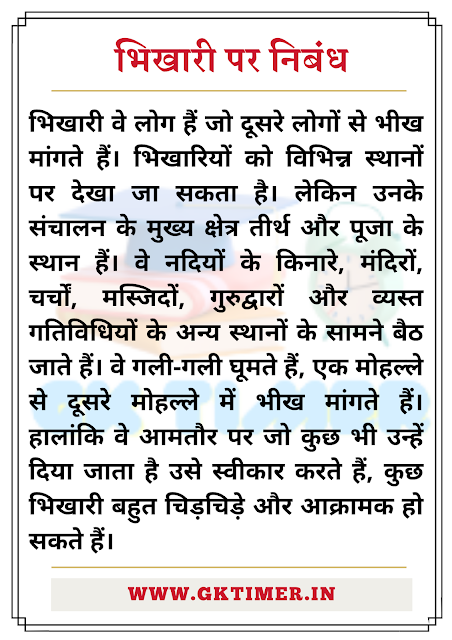271. The Gandhara art flourished under :
Correct Answer:-A ( the Kushanas )
Description:- Gandhara style flourished and achieved its peak during the Kushan period, from the 1st to the 5th centuries. It declined and suffered destruction after invasion of the White Huns in the 5th century.
272. Which one of the following inscriptions relate to the Chalukya king, Pulakesin II ?
Correct Answer:-C ( Aihole )
Description:- The Aihole inscription were written by the Ravikirti, court poet of Chalukya King, Pulakesin II who reigned from 610 to 642 CE. This inscription gives information about the conquests of Pulakesin, especially how he defeated Harshavardhana.
273. Which dynasty immediately succeeded the Maurya dynasty and ruled Magadha Kingdom?
Correct Answer:-B ( Sunga )
Description:- The Sunga Dynasty, established by Pusyamitra Sunga, after the fall of the Maurya Empire. The last Mauryan emperor Brihadratha was assassinated by the then commander-in-chief of the Mauryan armed forces, Pusyamitra Sunga in 185 B.C.
274. The capital of the ancient Chola kingdom was
Correct Answer:-A ( Uraiyur )
Description:- The Early Cholas of the pre and post Sangam period (300 BCE – 200 CE) were one of the three main kingdoms of the ancient Tamil country. Uraiyur, now Tiruchchirappalli was the ancient capital of the Chola Dynasty.
275. The script of the Indus Valley Civilization is
Correct Answer:-B ( Undeciphered )
Description:- Although these seals and samples of Indus writing have been floating around the scholastic world for close to 70 years, little progress has been made on deciphering this elegant script. The Indus script is an un-deciphered script.
276. Name the famous King of Kushan dynasty.
Correct Answer:-A ( Kanishka )
Description:- Kanishka was the most famous emperor of the Kushan dynasty (127–151) who ruled an empire extending from Turfan in the Tarim Basin to Pataliputra on the Gangetic plain and famous for his military, political, and spiritual achievements. He convened the 4th Buddhist Council in Kashmir and provided encouragement to both the Gandhara school of Greco- Buddhist Art and the Mathura school of Hindu art.
277. Which of the following does not have a Stupa ?
Correct Answer:-A ( Ranchi )
Description:- The Great Stupa at Sanchi was built by Mauryan emperor Ashoka. Dhamek Stupa in Sarnath is thought to be the oldest Stupa in existence. The stupa of Bharhut is between Allahabad and Jabalpur situated in the erstwhile Nagod state of Madhya Pradesh.
278. The site of birth [nativity] of Gautam Buddha is marked by :
Correct Answer:-B ( a ‘Rummindei Pillar’ of Ashok Maurya )
Description:- Lumbini, the birthplace of Lord Buddha, is marked by a commemorative pillar erected by Mauryan Emperor Ashoka of India during his pilgrimage to the holy site in 249 BC. The inscription on the Ashoka Pillar indentifies the Sacred Garden – spread over 9 sq. km – as the spot where the Enlightened One was born. Lumbini was known as Rummindei in Asoka’s time.
279. Which one of the following tribal assemblies was normally involved in the election of the tribal chief ?
Correct Answer:-A ( Samiti )
Description:- Several tribal assemblies, such as sabha, samiti, vidatha, and gana mentioned in the Rig Veda exercised deliberative, military and religious functions. But from the political point of view important were the sabha and Samiti. We have also some traces of the election of tribal chiefs by the tribal assembly called the samiti.
280. During which of the following periods of did the Kshatriyas have a distinct identity ?
Correct Answer:-A ( Age of the Buddha )
Description:- The Kshatriyas as the ‘khattiyas’ of Buddhist literature had a distinct identity at the time of the Buddha, but later their actual identity becomes vague. The same is also true of the Vaishyas. Of the three dvija castes, the Brahmin is the most easily identifiable as a concrete social group.
281. Chinese travellers visited India primarily because
Correct Answer:-A ( they were interested in Buddhism )
Description:- After the spread of the Buddhist religion, Chinese travelers came to India in big numbers to collect religious books and to visit holy places of Buddhism. Notable among those travellers included I-tsing, Ha- Hsien and Hiuen Tsang.
282. The term ‘Upanishad’ literally implies
Correct Answer:-C ( Sitting near )
Description:- Upanishad means ‘sitting down near’, referring to the student sitting down near the teacher while receiving esoteric knowledge. Monier-Williams’ Sanskrit Dictionary adds that, ‘Upanishad means ‘setting to rest ignorance by revealing the knowledge of the supreme spirit.’’
283. The Sage who is said to have Aryanised South India, was
Correct Answer:-C ( Agastya )
Description:- Sage Agastya, often considered the father of traditional Indian Medicine, is also associated with the Aryanization of South India. The Yadavas of South India were the first to be aryanized. Agastya compiled the first Tamil grammar called Agathiyam.
284. The origin of Indian music can be traced to which of the following Vedic Samhitas ?
Correct Answer:-B ( Samaveda )
Description:- Organized Indian music owes its origin to the Sama Veda which was a collection (samhita) of hymns and detached verses from other Vedas, meant for recital. These hymns were sung by Udgatar priests at sacrifices in which the Soma ritual drink was offered in libation to various deities.
285. Ashok spread Buddhism all over India and Ceylon by
Correct Answer:-B ( Sending the Dharma Mahamatras )
Description:- For the spread of Buddhism, Asoka sent missionaries (dharma mahamatras) all over India and beyond. The missionaries sent by Ashoka to the other countries were well received by them and the conversions took place easily because of the influence and the personal power Ashoka exercised.
286. In which Rock Edict Ashoka mentions about the casualities of Kalinga War and declares the renunciation of war ?
Correct Answer:-B ( Rock Edict XIII )
Description:- Rock Edict XIII and Minor Rock Edict I states that the human sufferings and mass killings due to the Kalinga War prompted Ashoka to take Buddhist religion and to adopt the path of ‘Dhamma Vijaya’ (win through religion) and ‘Ahimsa’ (non-violence).
287. The Earliest Settlements of Aryan tribes were at
Correct Answer:-C ( Sapta Sindhu )
Description:- The region where the Aryans settled in India around 1500 B.C. was called Sapta Sindhu (Seven Rivers), also referred to as the Brahmavarta. They spread to Indo-Gangetic plains in the later Vedic Period and this region came to be known as Aryavarta (1000 BC to 600 BC).
288. Pancha siddhantham of Varaha mihira deals with
Correct Answer:-B ( Astronomy )
Description:- The most famous work by Varahamihira is the treatise on mathematical astronomy called the Pancha Siddhantika (‘Five Astronomical Treatises’). It is dated 575 AD. It is a summary of five earlier astronomical systems, namely the Surya, Romaka, Paulisa, Vasistha and Paitamaha.
289. Which one of the following coins was issued in silver during the Gupta period ?
Correct Answer:-C ( Rupyaka )
Description:- The silver coins issued during the Gupta period were called ‘Rupaka.’ These coins were based on Sakas of Ujjaini weighing 32-36 grains. However, according to Fa-Hsien, cowries were the common means of exchange.
290. Lothal, the dockyard site of the Indus Valley Civilization, is situated in
Correct Answer:-A ( Gujarat )
Description:- Lothal is located in the Bhal region of Gujarat. It is situated near the village of Saragwala in the Dholka Taluka of Ahmedabad district. The nearest cities are Dholka and Bagodara.
291. Buddha means
Correct Answer:-D ( Enlightened one )
Description:- The word ‘Buddha’ in Pali and Sanskrit means ‘Enlightened one’. The word has become synonymous with Buddha Shakyamuni (Siddhartha Gautama) who is also known as Gautam Buddha.
292. Varahamihira was
Correct Answer:-D ( An Ancient Astronomer )
Description:- Varahamihira was an Indian astronomer, mathematician, and astrologer who lived in Ujjain in the 6th century A.D. He is considered to be one of the nine jewels (Navratnas) of the court of legendary ruler Yashodharman Vikramaditya of Malwa.
293. During the reign of Bindusara there was unrest at_____.
Correct Answer:-C ( Takshsila )
Description:- During the reign of Bindusara, Chandragupta Maurya’s son and successor, there was unrest at Taxila in the north-western province of Sindh. He sent Asoka (his son) to quell the uprising. Taxila was a highly volatile place because of the Indo-Greek presence and mismanagement of Governor Susima.
294. Name the Greek Ambassador at the Mauryan Court.
Correct Answer:-B ( Megasthanese )
Description:- Megasthenes was a Greek ethnographer and explorer who served as an ambassador of Seleucus I of the Seleucid dynasty to Chandragupta Maurya. His ‘Indika,’ throws light on the contemporary society, religious beliefs and social stratification.
295. Who was the contemporary South Indian ruler of Harshavardhana ?
Correct Answer:-B ( Pulakeshin II )
Description:- Harshavardhana (606 to 647 AD) and Pulakesin II (610–642 AD) were contemporaries to each other. According to the Aihole inscription, Pulakesin of the Chalukyan dynasty defeated Harshavardhana of Kannauj on the banks of the Narmada.
296. Which one of the following is the most lasting contribution of the Rastrakutas ?
Correct Answer:-B ( Pampa, Ponna, Ranna, the three writers of Kannada poetry and Kailasha Temple. )
Description:- The Kannada literature reached great heights under the Western Chalukyas and the Rashtrakutas who succeeded them. King Amoghavarsha I was himself one of the gems of Kannada. Adikavi Pampa, Sri Ponna and Ranna, called the ‘three gems’ of Kannada literature, found enthusiastic patronage from Rashtrakuta rulers. Similarly, the Kailasa temple is a contribution of the Rashtrakutas.
297. Ravikirti, a jain, who composed the Aihole Prashasti, was patronized by
Correct Answer:-C ( Pulakeshin II )
Description:- Ravikirti was the court poet of Chalukya King, Pulakesin II who reigned from 610 to 642 A.D. He authored the Aihole inscription at Meguti Temple which describes the defeat of Harshavardhana by Pulakesin II and the shifting of the capital from Aihole to Badami.
298. The original founder of the Manuscripts and Editor of Kautilya’s Athashastra was
Correct Answer:-C ( R. Shamashastri )
Description:- In 1905, R. Ramashashtri discovered and published the Arthashastra, an ancient Indian treatise on statecraft. He transcribed, edited and published the Sanskrit edition in 1909. He proceeded to translate it into English, publishing it in 1915.
299. From which among the following rulers has the Government of India borrowed and adopted its symbols ?
Correct Answer:-A ( Ashoka )
Description:- The National Emblem of India is derived from the time of the Emperor Ashoka. It is a replica of the Lion of Sarnath, near Varanasi in Uttar Pradesh. The Lion Capital was erected in the Emperor Ashoka in 3rd century B.C. to mark the spot where Buddha first proclaimed his gospel of peace and emancipation.
300. 6th century B.C. was an age of
Correct Answer:-D ( Religious ferment )
Description:- The 6th century B.C was an age of religious ferment in the world. In India, it witnessed the birth of Buddhism and Jainism. It was in the same period that Heraclitus preached his new doctrines in the Greek island of Ionia; Zoroaster launched his protest against the prevailing religious superstitions in Iran and Confucius showed a new way of life in China.




